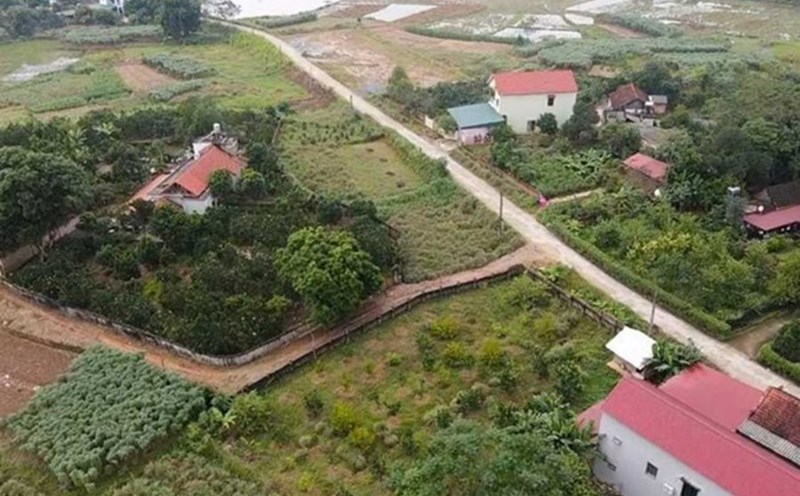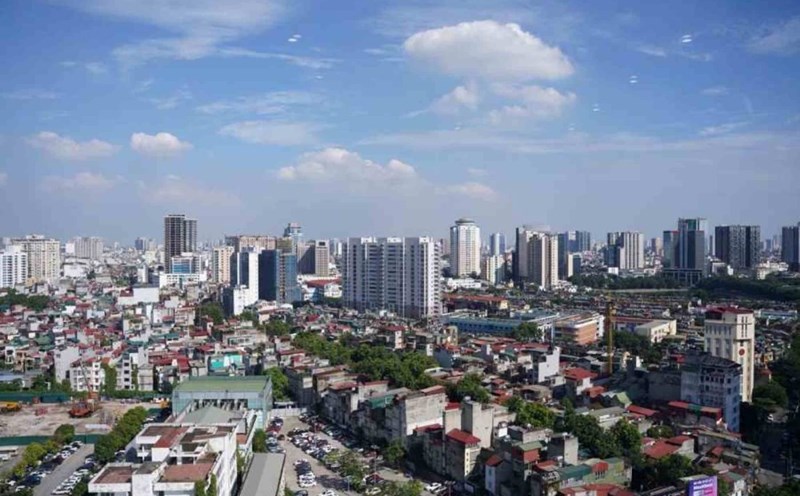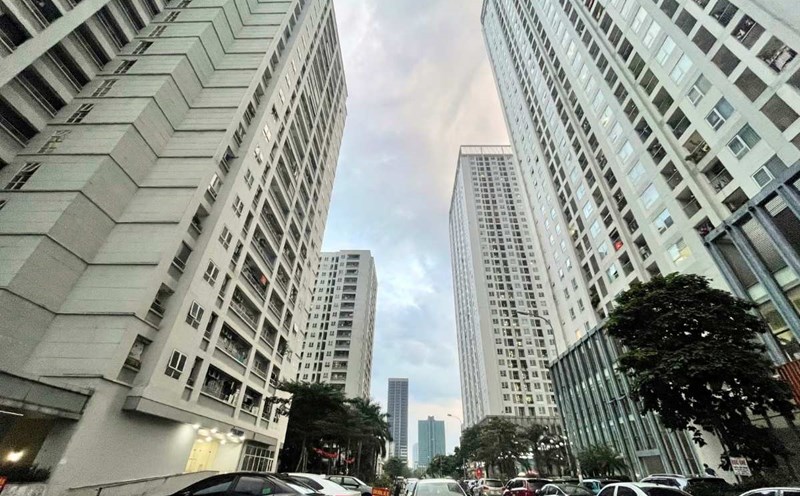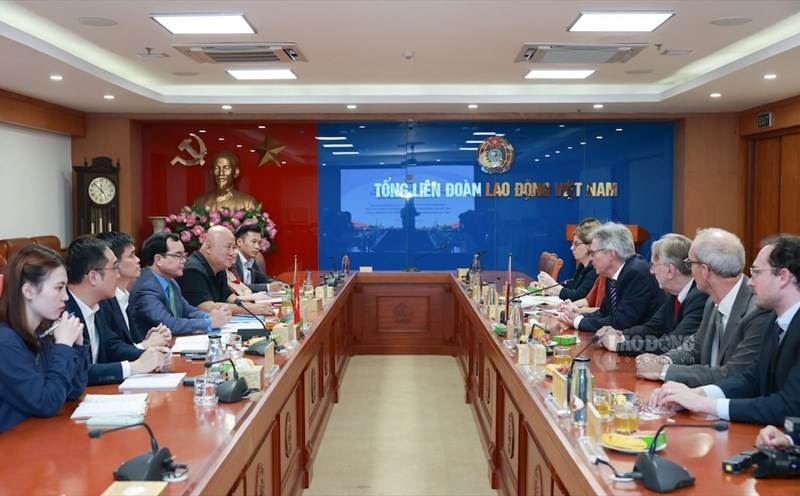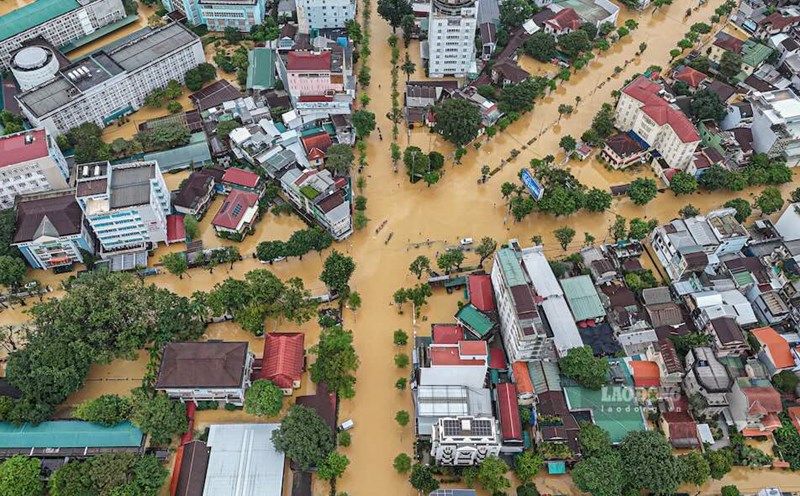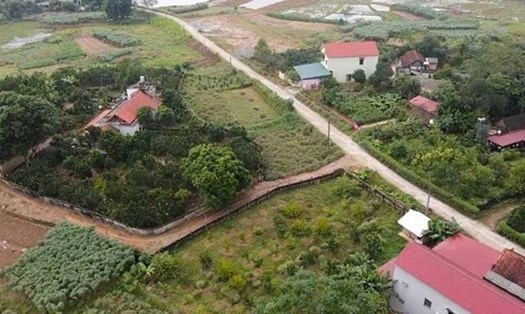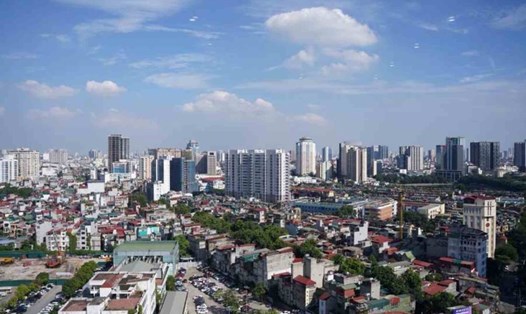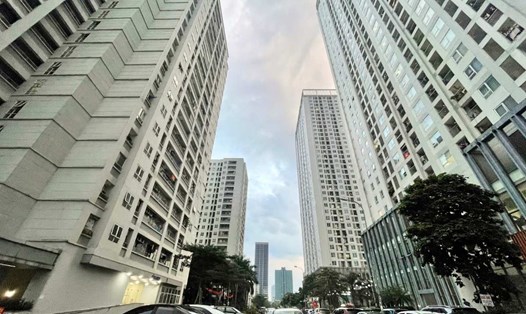Housing prices in Hanoi continue to peak
Research data from the Vietnam Institute for Real Estate Market Research and Evaluation (VARS IRE) shows that in the first 9 months of 2025, the Hanoi market recorded about 22,000 newly opened apartments, equivalent to 64% of the total supply in 2024 and the highest level in the same period of 2019-2025. In particular, apartments continue to play a leading role, accounting for 76% of the total new supply.
However, the selling price did not cool down, even "hotter" as newly opened projects with prices above 100 million VND/m2 are increasingly popular. The apartment price index in Hanoi in the third quarter of 2025 increased by 5% compared to the previous quarter and increased by 96.2% compared to the original quarter (Q1/2019) - 1.7 times higher than the increase in the old Ho Chi Minh City in the same period.
The primary price level of CHCC (households opening for sale for the first time) in Hanoi also set a new "mark", reaching an average of 95 million VND/m2, higher than Ho Chi Minh City, with more than 43% of new supply in the third quarter having prices above 120 million VND/m2.
High "own" housing prices have narrowed the price increase range, reducing the attractiveness of investment capital. At the same time, capital value also far exceeded the financial capacity of many investors, causing cash flow to start moving out of Hanoi to seek new opportunities in markets with reasonable prices and higher growth space.
The cash flow is moving strongly into the Southern region.
Mr. Nguyen Thai Binh - General Director of Dong Tay Tay Land, Deputy General Secretary of VARS - shared that at the end of the second quarter, preliminary statistics from some investors showed that customers in the North accounted for about 20% of total transactions in the South in the first half of the year, double the same period last year. By the end of the third quarter, this ratio had reached 30%, nearly equal to the vibrant period of 2016-2020.
Accordingly, the Southern region has attracted capital flows thanks to price levels remaining at the accumulated level for the past 3 years, creating room for growth and attractive profit margins for investors. In some areas on the outskirts of the old Ho Chi Minh City, including merged localities, the price level is still 30-40% lower than Hanoi, while the connecting infrastructure and urbanization rate have increased sharply.
For example, with 2-4 billion VND, in Hanoi, you can only buy a 1-bedroom or 1+1 apartment, then in Ho Chi Minh City, investors can have more diverse options, from apartments to individual houses and land.
The capital flow of Hanoi investors is shifting to Ho Chi Minh City and surrounding areas not only to "hunt for cheap prices", but also to diversify investment portfolios, optimize real exploitation value and capital efficiency.
This demand is also reinforced by the position of Ho Chi Minh City as the most dynamic economic center in the country, leading in attracting FDI and concentrating a large number of foreign experts in the fields of technology, finance, with demand for high-end housing and good affordability.
The "Southward" trend is also driven by the return of a series of large investors in the South after being legalally removed, along with strong communication campaigns. In particular, many individual investors from Hanoi tend to go with familiar investors when they expand projects to the South, taking advantage of the advantage of a clear understanding of the brand and implementation capacity.
An important factor that helps strengthen investment attraction is the infrastructure development policy and the driving force for planning areas after the new administrative merger of Ho Chi Minh City. Many new projects are currently closely following metro lines, beltways, and key traffic routes, improving inter-regional connectivity and increasing asset value in the future, especially attracting investors in Hanoi.
VARS IRE believes that, in general, the "Southward" wave of real estate investment cash flow is getting stronger. The South, especially the Ho Chi Minh City area, is gradually becoming a new destination thanks to reasonable prices, accelerated infrastructure and improved legal framework.
However, investors need to carefully select segments, assess financial capacity and prioritize long-term strategies instead of expecting quick profits, to ensure safety and efficiency in the context of a restructuring market.

